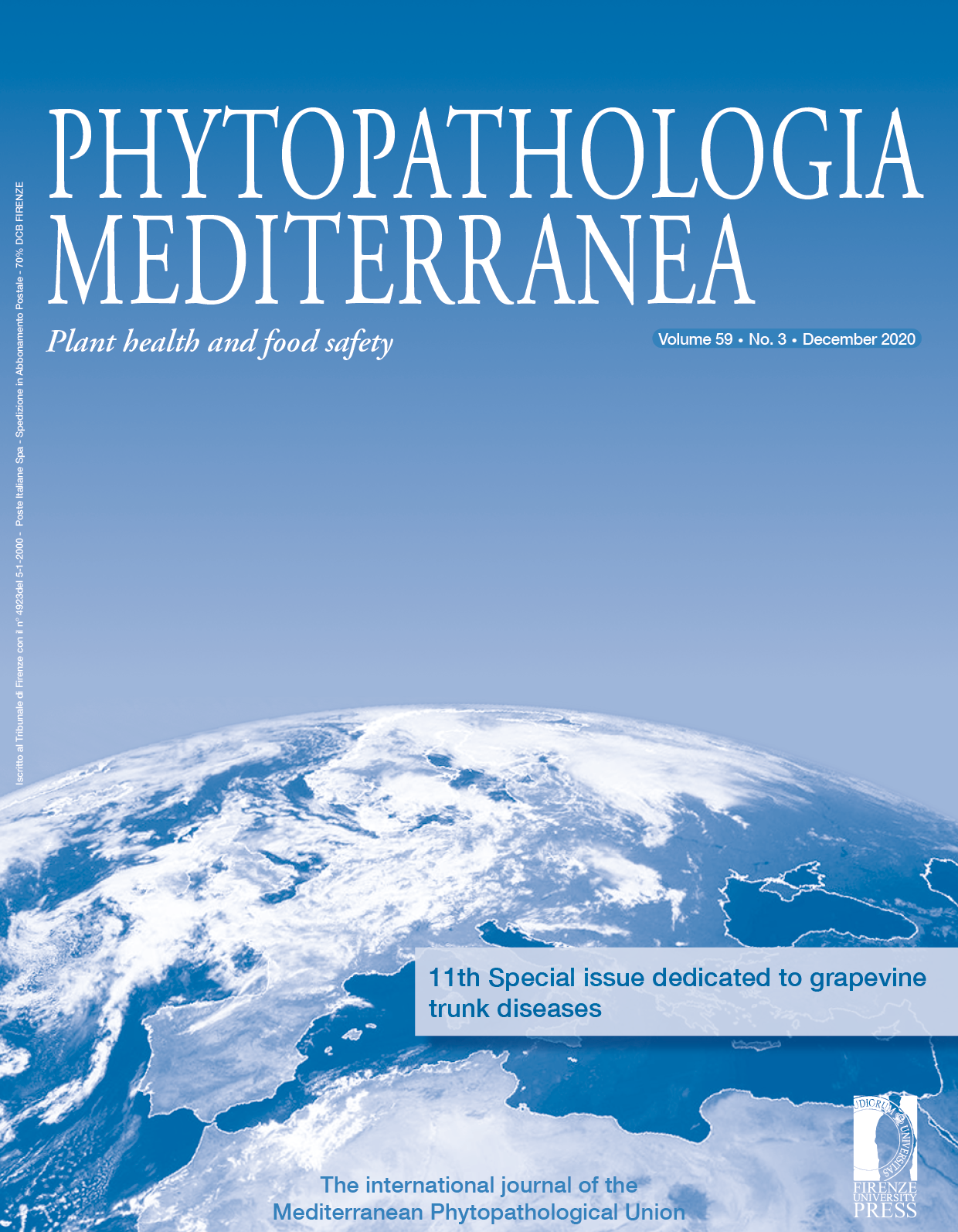Characterization of Trichoderma isolates from southern Italy, and their potential biocontrol activity against grapevine trunk disease fungi
Published 2020-07-17
Keywords
- Biological control,
- Botryosphaeriaceae,
- canker,
- Diatrypaceae,
- Vitis vinifera
How to Cite
Abstract
Grapevine trunk diseases (GTDs) are one of the most economically important diseases of grapevines, causing yield reductions and limiting vineyard lifespans. Fungal pathogens responsible for GTDs primarily infect grapevines through pruning wounds. The lack of systemic fungicides to stop the advance of fungi in vine vascular systems makes the use of pruning wound protection with either synthetic chemicals or biological control agents (BCAs) the main available GTD control strategy. Demands for sustainable grape production and increasing limitations on pesticide usage have raised interest in potential use of BCAs as pruning wound protectants against GTDs. The objectives of this study were to characterize 16 Trichoderma isolates from southern Italy using molecular methods, and to evaluate their potential activity as BCAs in vitro against the GTD canker-causing fungi Diplodia seriata, Eutypa lata and Neofusicoccum parvum. Molecular studies along with phylogenetic analyses identified eight species, including Trichoderma atroviride, T. guizhouense, T. harzianum, T. koningiopsis, T. longibrachiatum, T. paratroviride, T. paraviridescens, T. spirale, and one unidentified Trichoderma sp. All these species had optimum mycelium growth between 25 and 35°C. In vitro dual culture experiments assessed antagonistic capabilities of all the Trichoderma isolates against D. seriata, E. lata and N. parvum, and showed that the isolates inhibited mycelial growth of the pathogens by up to 70%. The most inhibitory isolates were tested in planta for capability to protect pruning wounds against D. seriata and N. parvum in a detached cane assay. All the selected Trichoderma isolates gave >80% control of D. seriata and 60% control of N. parvum, and protected pruning wounds for up to 21 d after treatment.






